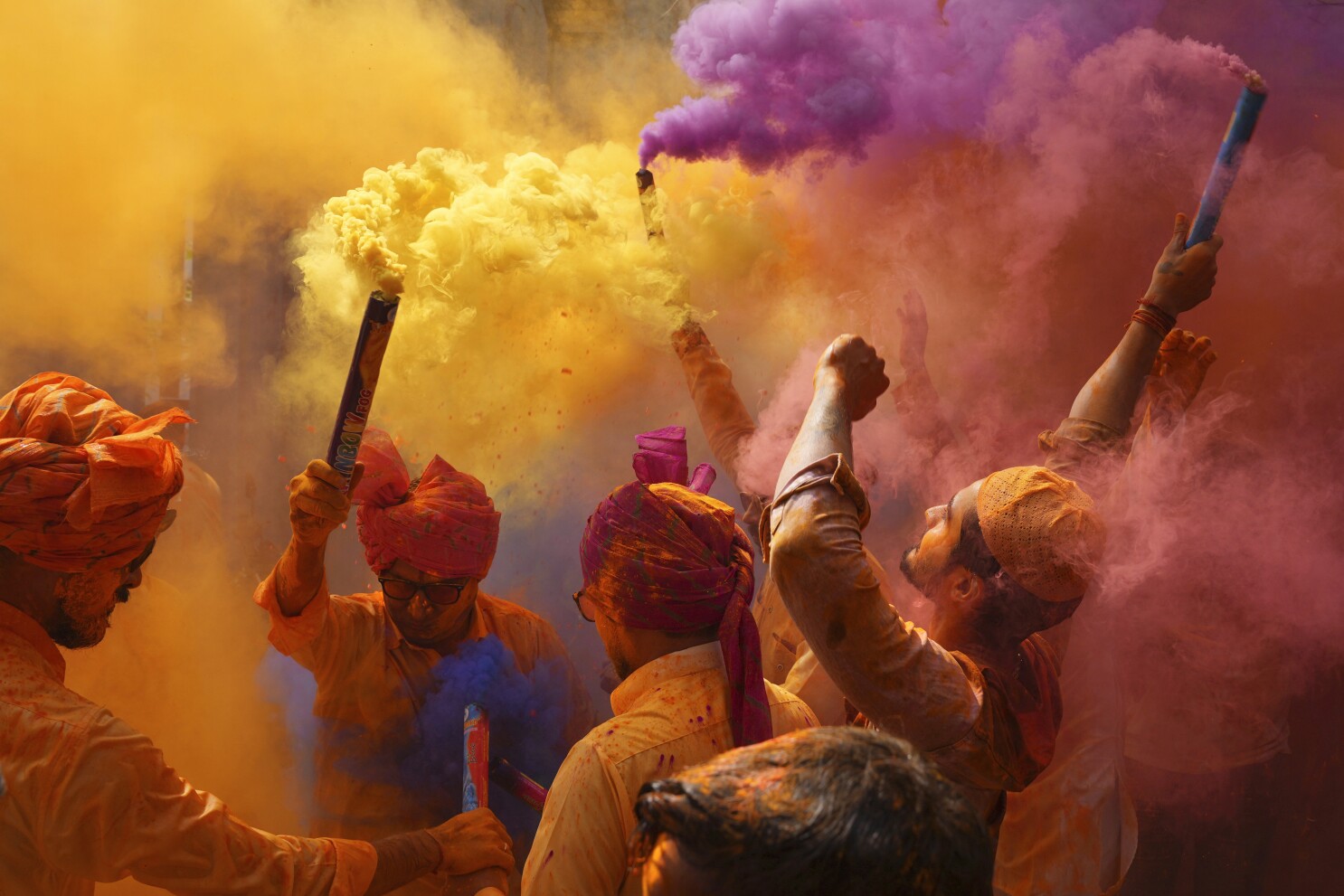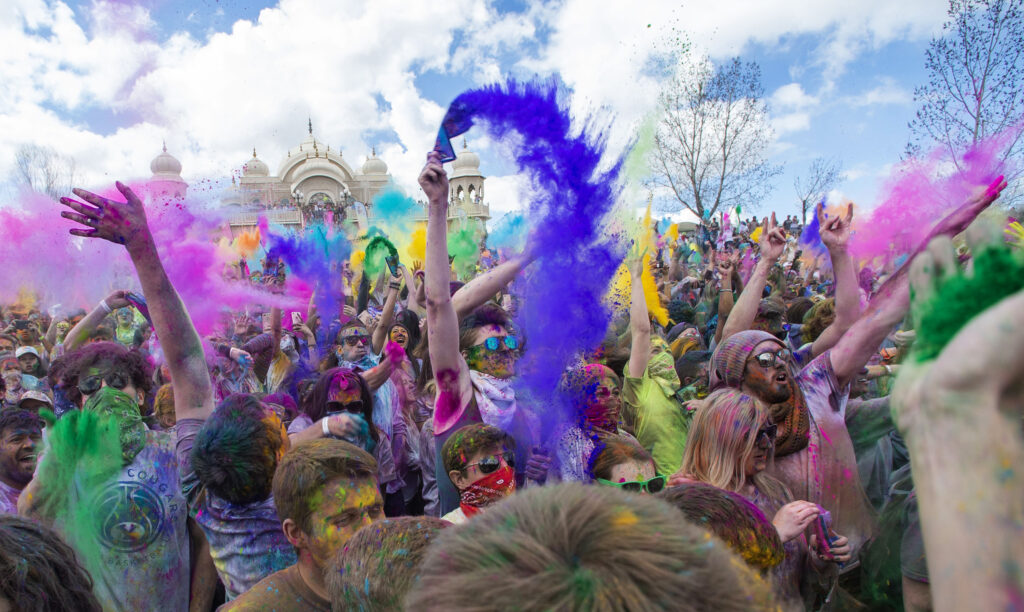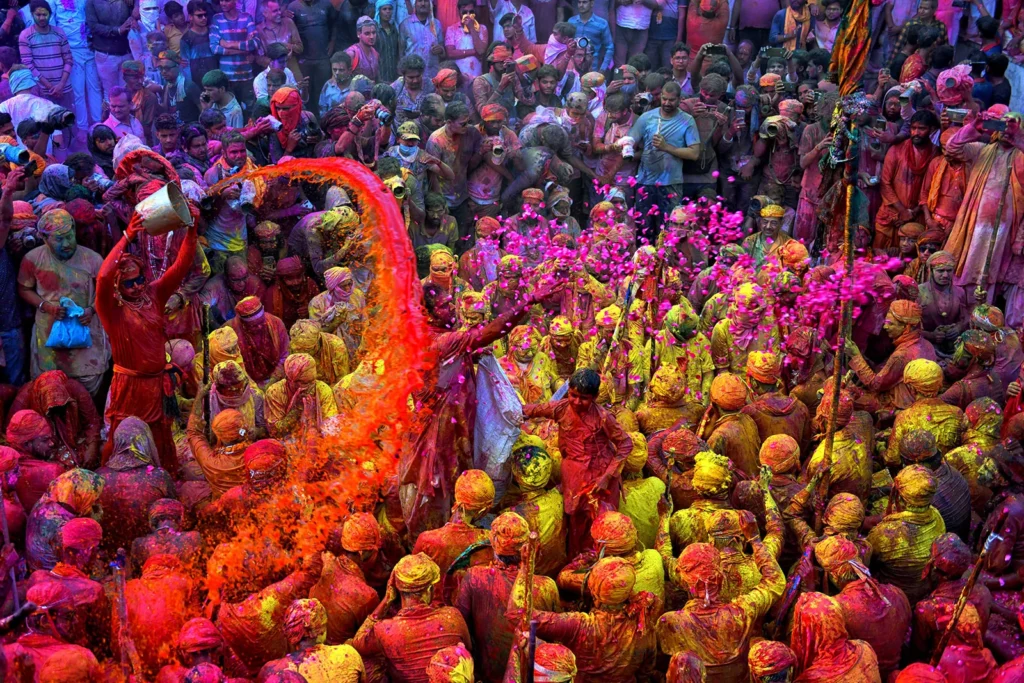Holi: The Festival of Colors – A Celebration of Joy, Renewal, and Unity

Holi’s roots are deeply entwined with Hindu mythology and ancient traditions. One popular legend centers on Prahlada and Holika, symbolizing the triumph of devotion and righteousness over evil. According to the story, the demon king Hiranyakashipu demanded that everyone worship him, but his son Prahlada remained devoted to Lord Vishnu. Enraged, Hiranyakashipu ordered his sister Holika—who was immune to fire—to burn Prahlada. However, due to divine intervention, Holika was consumed by flames while Prahlada survived. This story represents the victory of good over evil and is commemorated during Holika Dahan, the bonfire ritual that takes place on the eve of Holi.
Another popular tale associates Holi with the playful love between Lord Krishna and Radha. Krishna, known for his mischievous nature and blue skin, is said to have playfully colored Radha and the gopis (cowherd girls) with vibrant powders. This playful spirit is celebrated today through the throwing of colored powders, symbolizing love and joy.
When and Where Is Holi Celebrated?
Holi is celebrated primarily in India and Nepal, but its popularity has spread globally due to the Indian diaspora. It falls on the full moon day (Purnima) of the Hindu lunar month of Phalguna, usually in late February or March, marking the end of winter and the beginning of spring.
Different regions of India celebrate Holi with unique customs. For example, in Barsana and Nandgaon near Mathura, the birthplace of Krishna, a famous event called Lathmar Holi involves playful mock-fights with sticks. In Punjab, Holi coincides with the festival of Hola Mohalla, a Sikh celebration featuring martial arts displays and poetry.

The Rituals and Traditions of Holi
Holi celebrations traditionally begin with Holika Dahan or Chhoti Holi, a bonfire held on the night before Holi. Communities gather around the fire, singing and dancing, to symbolically burn away evil spirits and welcome new beginnings.
The next day, known as Rangwali Holi or Dhuleti, is when the real fun begins. People of all ages come together in streets and public spaces to smear and throw brightly colored powders (gulal) and spray colored water on each other. The air fills with laughter, music, and an explosion of colors, dissolving social barriers as friends, family, and even strangers unite in celebration.
Traditional Holi foods such as gujiya (a sweet dumpling), thandai (a spiced milk drink often infused with bhang, an edible preparation of cannabis), and various regional snacks accompany the festivities.
Cultural Significance and Social Impact
Holi carries profound cultural meanings beyond its joyful exterior. It symbolizes the victory of good over evil, the arrival of spring and fertility, and the breaking down of social divisions. During Holi, distinctions of caste, age, gender, and social status temporarily fade, encouraging forgiveness, friendship, and community bonding.
In rural India, Holi is also an agricultural festival, praying for good harvests and prosperity. The colors used are often derived from natural sources such as flowers and herbs, reflecting a deep connection to nature.
Modern Celebrations and Global Spread
In recent decades, Holi has transcended religious and geographic boundaries, becoming a global festival of colors celebrated in many countries, including the United States, United Kingdom, Canada, Australia, and South Africa. Public events, known as “Color Runs” or “Holi Festivals,” attract diverse crowds eager to partake in the exuberant play of colors.
Urban celebrations often include music concerts, dance parties, and cultural performances alongside traditional rituals. Social media and Bollywood have played a significant role in popularizing Holi’s colorful spirit worldwide.
Environmental and Health Considerations
Traditional Holi powders were made from natural ingredients, but modern synthetic colors have raised concerns about skin allergies and environmental pollution. In response, there is a growing movement promoting the use of organic and eco-friendly colors to ensure the festival remains safe and sustainable.

Conclusion
Holi is much more than a festival of colors—it is a vibrant expression of cultural heritage, spiritual renewal, and social unity. From its mythological origins to its joyful modern-day celebrations, Holi invites people to embrace joy, forgiveness, and the beauty of life in all its hues. As colors fill the air every spring, Holi reminds us of the power of togetherness and the enduring human spirit.




